Nyheter
Key considerations in choosing a commodity index
Publicerad
8 år sedanden
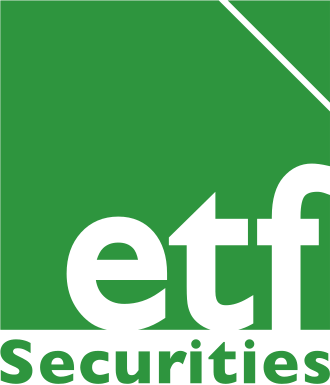
ETF Securities Portfolio Insights: Key considerations in choosing a commodity index
Highlights
- The composition of a commodity index, the liquidity of its underlying contracts and the complexity of its rolling schedule can have an impact on its performance.
- Getting exposure to futures contracts further out on the curve with enhanced commodity strategies, is an easier and more efficient way to improve return than increasing the complexity of the index rolling schedule.
- Adding enhanced commodity indices to a portfolio of global equities and bonds, improves the Sharpe ratio by 3% on average compared to classic commodity indices.
There are a number of factors that need to be considered when choosing a commodity index to invest in. Historical back-tested performance only presents one part of the picture. The cost of investing in an instrument, such as an Exchange Traded Product (ETP), that tracks commodity returns can vary widely depending on a number of key factors.
The index composition and weighting
The composition and weighting of a commodity index define its level of diversification. The more diversified the index is, the better the investor is protected from the downside risk when the commodity index is added to a multi-asset portfolio.
The composition of major commodity benchmarks can vary significantly as illustrated above. For example, the Bloomberg Commodity Index (BCOM) has 31% in agriculture and 28% in energy while the S&P GSCI and the Deutsche Bank Liquid Commodities Index Optimum Yield (DBLCI-OY) have more than 50% concentrated in the energy sector.
A closer look at the individual commodity level shows that 40% of the S&P GSCI index is only in oil (23% in WTI crude and 16% in Brent crude) while other commodity indices allocate a maximum of 13% to a single commodity. The weightings change marginally over time. The closer the index can get to an equal weighting, the better its level of diversification.
Modifying the composition and weighting of an index while keeping the same rolling methodology tends to increase return, by 2.3% for UBS indices and 0.9% for Deutsche Bank indices since the end of December 2015, as illustrated above.
The index rolling strategy
In this section, we analysed the performance of four commodity indices in order to assess the impact that “enhanced” rolling strategies can have on returns. All four indices are exposed to the same constituents with the same weights as BCOM but apply different rolling strategies.
The next chart shows the additional return of three different enhanced strategies compared to BCOM. The first strategy increases the index average maturity from 2 or 3 months with BCOM to 5 or 6 months with the BCOM 3 Month Forward Index (BCOMF3). Index providers tend to use this strategy to help mitigate the impact of contango (negative roll yield) on the index’s total return. This strategy improved return by 2%.
Applied to the Deutsche Bank Commodity Booster index, the optimum yield strategy is exposed to contracts that expire up to 13 months from now based on the best implied roll yield. This strategy outperforms BCOM by 2.5%. The constant maturity strategy, used by the UBS Bloomberg BCOM Constant Maturity index, rolls a small portion of its exposure every day in order to maintain its average maturity, outperforming BCOM by 2.6%.
Increasing the complexity of the rolling methodology with the optimum yield and constant maturity strategies only adds 0.5% and 0.6% extra return respectively compared to the strategy that simply increases the index average maturity.
The impact on operational costs
The number of contracts an index tracks and the frequency and complexity of the rolling schedule can have an impact not only on performance as seen previously, but also on the operational costs of replicating the index.
We here distinguish between commodity indices with a classic roll methodology: BCOM, S&P GSCI, the Rogers International Commodity Index (RICI) and the Thomson/Reuters CRB index (CRB), and commodity indices that aim to improve the classic strategy, typically called enhanced commodity indices.
The above chart shows the number of transactions in each index, defined as the number of times each constituent has to roll in a year, multiplied by the number of days during each roll. The UBS BCOM CMCI Index has the largest number of transactions as it rolls a small portion of its exposure every day to maintain each constituent’s average maturity over time. The methodology of an investable commodity index needs to be replicable. The more complex the rolling schedule is, the higher the replication costs which may lead to higher tracking errors.
The liquidity of the underlying futures contracts that the index holds is also a key factor to consider, as an illiquid contract can cause disruption in the daily pricing of the commodity index and prevent investors from purchasing or redeeming their funds when they want. The further out on the curve the exposure is, the less liquid the futures contract. The above chart shows how much an investor can buy or redeem from an instrument that tracks the index without disrupting the daily pricing of the underlying futures market.
Commodity indices in a portfolio
In this section, we compare the performance of portfolios with 50% in global equities, 40% in global bonds and 10% in commodities to a standard portfolio of 60% global equities and 40% global bonds, the benchmark, since 1998.While enhanced commodity indices tend to perform better than classic commodity indices, adding them to a portfolio of equities and bonds improves the Sharpe ratio by just 3% on average: from 0.72 on average for portfolios with 10% in classic commodity benchmarks to 0.75 on average for portfolios with 10% in enhanced commodity indices.
For more information contact:
ETF Securities Research team
ETF Securities (UK) Limited
T +44 (0) 207 448 4336
E info@etfsecurities.com
Important Information
This communication has been issued and approved for the purpose of section 21 of the Financial Services and Markets Act 2000 by ETF Securities (UK) Limited (“ETFS UK”) which is authorised and regulated by the United Kingdom Financial Conduct Authority (the “FCA”).
Du kanske gillar
-
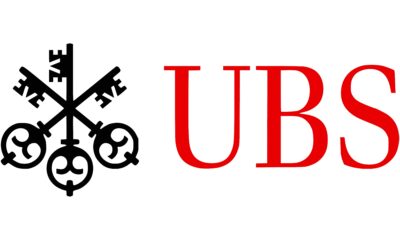

UBS Asset Management anställer ny chef för ETF- och indexfondförsäljning
-
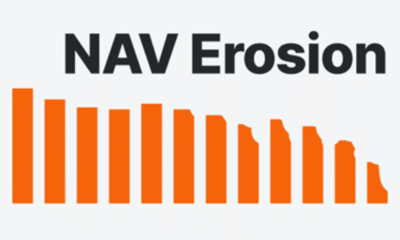

Vad investerare har fel om NAV-erosion i optionsbaserade inkomst-ETP:er
-
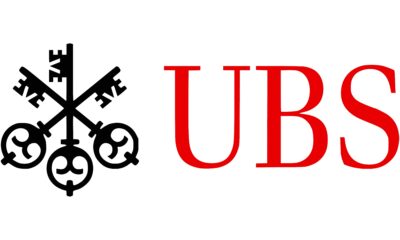

UBS utökar sitt Core ETF-sortiment med räntebärande fonder
-


UBS Asset Management lanserar sin första aktivt förvaltade ETF
-
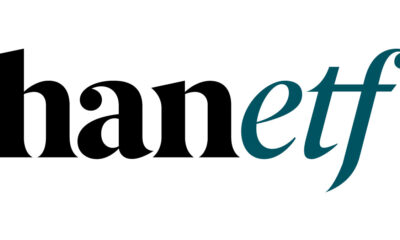

Europafokuserade ETPer ser större andel av flödena under första kvartalet
-


Safello ingår avtal med DDA avseende börshandlade produkter
Nyheter
Utdelningar och försvarsfonder lockade i augusti
Publicerad
12 minuter sedanden
31 augusti, 2025
De senaste månaderna har det varit större förändringar på denna lista än normalt. Under augusti 2025 lockade utdelningar och försvarsfonder mest, framförallt månadsutdelande ETFer . Vi noterar är att Montrose befäster sin position som den populäraste ETFen på Etfmarknaden.se samtidigt som listan är mer koncentrerad än tidigare.
Det går att handla andelar i de flesta av dessa ETFer genom de flesta svenska banker och Internetmäklare, till exempel Nordnet, SAVR, DEGIRO och Avanza.
Månadsutdelande fonder tilldrar sig stort intresse
Den 6 november förra året, bara dagar efter att vi publicerat en artikel om månadsutdelande fonder, lanserade JP Morgan en helt ny variant av en månadsutdelande fond. JPMorgan US Equity Premium Income Active UCITS ETF USD (dist) (JEIP ETF) med ISIN IE000U5MJOZ6, är en aktivt förvaltad ETF.
Den börshandlade fonden investerar i företag från USA. Ytterligare intäkter söks genom användning av en överlagringsstrategi med derivatinstrument. Denna ETF strävar efter att generera en högre avkastning än S&P 500-index.
Detta ledde till att vi fick uppdatera vår artikel om månadsutdelande fonder med JEIP men också med JPMorgan Nasdaq Equity Premium Income Active UCITS ETF USD (dist) (JEQP ETF) med ISIN IE000U9J8HX9, som är en aktivt förvaltad ETF, men som mäter sig mot Nasdaq-100 istället.
Under den sista veckan i februari 2025 noterade Montrose den första svenska ETFen på fem år. MONTDIV ETF är Sveriges första månadsutdelande ETF och rusade snabbt på listan efter de mest eftersökta börshandlade fonderna på vår sida. Det finns emellertid en hel del andra ETFer som ger utdelning varje månad. Vi uppdaterar löpande denna artikel.
Notera att vi ständigt uppdaterar listan på månadsutdelande ETFer då det hela tiden tillkommer nya.
Den populäraste ETFen av alla
Som nämnts så är MONTDIV den allra populäraste börshandlade fonden på vår sida. Tillsammans med sin syster ETF, MONTLEV, är de även populära på andra håll. Fram till idag har MONTDIV lockat över 300 miljoner kronor och seglat upp som den tredje mest ägda i Sverige.
Fortsatt intresse för försvarsfonderna
Vilken ETF för försvarsindustrin är bäst och hur investerar man i denna sektor med hjälp av börshandlade fonder? I dag finns det flera ETFer som ger exponering mot flyg och försvar som följer tre olika index. De årliga förvaltningskostnaderna ligger 0,35 och 0,55 procent. Vi har skrivit en artikel om olika försvarsfonder. Du hittar mer om ETFer för försvarsindustrin här.
Utöver detta har samtliga de större aktörerna lanserat en en börshandlad fond för den europeiska försvarsindustrin vilka alla blivit stora succcéer. Du hittar en sammanställning på ETFer som spårar den europeiska försvarsindustrin här.
Inte längre populärast av dem alla
XACT Norden Högutdelande är utan tvekan en av de mest populära av alla de ETFer som vi har skrivit om på vår sida. Den kvartalsvisa utdelningen och dess satsning på aktier med en låg volatilitet och hög direktavkastning gör det till en populär fond som återfinns i mångas depåer. Inom kort kommer årets tredje utdelning från denna börshandlade fond.
M5TY ETC är en ny börshandlad produkt med månadsutdelning
YieldMax® MSTR Option Income Strategy ETC (M5TY ETC) med ISIN XS3087774306, utfärdar optioner för att ge innehavarna en löpande inkomst.
YieldMax® MSTR Option Income ETC (MSTY) syftar till att generera månatlig inkomst genom att inneha den USA-noterade YieldMax® MSTR Option Income Strategy ETF (US MSTY), som genererar denna inkomst genom att sälja/utfärda köpoptioner på MSTR.
SAVRs ETF-satsning skapar stort intresse
SAVR har valt att lansera handel med börshandlande fonder. SAVR som tidigare varit kände för att erbjuda handel med traditionella fonder har nyligen valt att lansera handel med aktier, men också med ETFer på framför allt tyska Xetra. På denna marknad erbjuder nu SAVR med flera ETFer än vad både Nordnet och Avanza gör.
Samtidigt har SAVR valt att lansera en egen produkt tillsammans med amerikanska Vanguard, SAVR Global by Vanguard.
ETP, ETF, ETC, ETN, ETI
Många är osäkra på terminologin när det gäller börshandlade produkter och vi ser dels hur de söker – och hittar många av de informativa artiklar som vi skrivit på Etfmarknaden.se, men också vår ordlista som förklarar det mesta som kan verkar förvirrande. En av våra äldre artiklar, Vad är vad? ETP, ETF, ETC, ETN och ETI från september 2012, har nu helt plötsligt dykt upp som en av de mer lästa artiklarna.
Hur svenska Pan Capital tjänade 4 miljarder på aktiemarknadens globalisering
På senare tid har vi sett hur många söker efter Pan Capital, ett företag som vi skrev om i mars 2020, när pandemin slog till som hårdast. Vi skrev om Jacob Bursells bok, Risk, ett reportage om hur datorerna förändrade finansbranschen och hur svenska Pan Capital tjänade 4 miljarder på aktiemarknadens globalisering.
Det går att handla börshandlade fonder hos Nordea
Nordea har en plattform, och i denna handelstjänst erbjuder denna bank tusentals olika ETFer. Det går att handla ETFer med fokus på räntemarknaden, aktiemarknaden, landspecifika ETFer och börshandlade fonder med fokus på olika branscher. Att handla ETFer hos Nordea sker endera i Nordea Investor och nätbanken.
Virtune attraherar åter intresse från spararna
I maj 2025 lanserade denna svenska förvaltare en ny produkt, Virtune Bitcoin Prime ETP är en fysiskt backad börshandlad produkt (ETP) designad för att erbjuda investerare ett säkert och kostnadseffektivt sätt att få exponering mot Bitcoin (BTC).
Halalfonder är nu hetare än ESG
Tidigare var det många som sökte på begreppet ESG, men detta sökord har fallit från listan under de senaste månaderna. En variant av ESG-fond är de fonder som har en islamistisk inriktning, så kallade halalfonder, och det är fortfarande något som våra besökare letar information om. En sådan fond är ASWE, som är en aktivt förvaltad shariafond men till exempel HSBC har en serie fonder med fokus på att investera enligt islam. Det är ingen speciell enskild fond som sticker ut och lockar mer än andra.
BlackRock lanserar europeisk försvars-ETF för europeiska investerare
I slutet av maj lanserade BlackRock iShares Europe Defence UCITS ETF (DFEU), en europeisk försvars-ETF för europeiska investerare, som följer STOXX Europe Targeted Defence Index. Fonden är utformad för att ge exakt exponering mot europeiska försvarsföretag genom ett intäktsbaserat urval i en tid då europeiska nationer ökar de offentliga utgifterna för att förbättra sin försvarskapacitet.
Går det att handla ETFer hos Skandiabanken?
Svaret är ja. Skandiabanken erbjuder sina kunder att handla med börshandlade fonder, både på telefon och på Internet.
Skandiabanken tar ett fast pris på 69 kronor för affärer upp till 250 000 kronor. Aktier, fonder och andra värdepapper på Nasdaq, NGM, NDX och Spotlight Stockmarket kan handlas över Internet. Du har också möjlighet att handla med utländska aktier (Norden, västra Europa, Kanada och USA) över telefon.
En bred satsning på råvarumarknaden
Fler och fler läsare söker information om råvarufonder. En av ETF som fått många sökningar är L&G Multi Strategy Enhanced Commodities UCITS ETF (EN4C ETF) syftar till att spåra resultatet för Barclays Backwardation Tilt Multi-Strategy Capped Total Return Index (”Indexet”).
Normalt sett är det samma fonder och börshandlade produkter som de nordiska investerarna söker på. Av den anledningen är det extra roligt att se att nya produkter hamnar bland de mest sökta. I detta fall är det Torbjörn Iwarsons råvarufond som lockar ett stort intresse. Det är Nordens enda riktiga råvarufond. Notera att just nu är råvarumarknaden är litet nedtryckt, så det är ett bra tillfälle att komma in billigt. Läs mer om Centaur Commodity Fund på deras hemsida.
Du kan handla Ripple med olika börshandlade produkter
Valour Ripple (XRP) SEK är en börshandlad produkt som spårar priset på XRP, Ripples infödda token. XRP förbättrar främst globala finansiella överföringar och utbyte av flera valutor. Snabb och miljövänlig, den digitala tillgången XRP designades för att fungera som den mest effektiva kryptovalutan för olika applikationer inom finanssektorn.
Valour Ripple (XRP) SEK ETP (ISIN: CH1161139584) är en börshandlad produkt som spårar priset på XRP, Ripples infödda token.
XRP har ett börsvärde på 29,57 miljarder USD och rankas på en sjätte plats bland alla kryptovalutor globalt. Ripple XRP är en nyckelspelare inom det digitala valutaområdet, känd för sin användning för att underlätta snabba och billiga internationella pengaöverföringar. XRP fungerar på RippleNet och fungerar som en bryggvaluta i Ripples betalningsnätverk, vilket möjliggör sömlösa valutaväxlingar över hela världen. Detta har positionerat XRP som ett föredraget val för finansiella institutioner som söker effektiva alternativ till traditionella gränsöverskridande betalningsmetoder.
Är du nyfiken på vilka börshandlade produkter det finns för att investera i XRP? Vi har självklart skrivit en artikel om detta där vi jämför alla de börshandlade alternativ vi hittat.
Investera i Polen med börshandlade fonder
I början av april skrev vi en text som sammanfattade att Investera i Polen med börshandlade fonder. Det tog en liten tid, men den har dykt upp på listan bland de mest populära fonderna.
I slutet av samma månad meddelade SAVR att företaget nu erbjuder handel på mer än 700 polska aktier.
Den första försvarsfonden med fokus på Europa
WisdomTree Europe Defence UCITS ETF (EUDF) var den första försvarsfonden med fokus på Europa men den fick snabbt flera konkurrenter. Det är en börshandlad fond (ETF) som investerar i europeiska företag inom försvarsindustrin. Den spårar WisdomTree Europe Defence UCITS Index och är tillgänglig för handel på flera europeiska börser, inklusive Deutsche Börse Xetra och London Stock Exchange.
BJL8 är BNPs europeiska försvarsfond
BNP Paribas Easy Bloomberg Europe Defense UCITS ETF Acc (BJL8 ETF) med ISIN LU3047998896, syftar till att följa Bloomberg Europe Defense Select-indexet. Bloomberg Europe Defense Select-indexet följer utvecklingen för europeiska företag som är verksamma inom militär- eller försvarsindustrin.
Den börshandlade fondens totala kostnadskvot (TER) uppgår till 0,18 % per år. BNP Paribas Easy Bloomberg Europe Defense UCITS ETF Acc är den billigaste och största ETF:en som följer Bloomberg Europe Defense Select-indexet. ETFen replikerar utvecklingen för det underliggande indexet genom fullständig replikering (genom att köpa alla indexkomponenter). Utdelningarna i ETFen ackumuleras och återinvesteras.
Går det att handla ETFer hos Swedbank?
Swedbank ETF tror vi kan tolkas att det endera finns intresse för att veta om Swedbank har ETFer i sitt utbud, eller om det går att handla börshandlade fonder på Swedbank. Svaret på denna fråga återfinns här.
Är det värt att satsa på tyska aktier?
Många söker information om tyska aktier och tyska fonder. I mars publicerade vi en text som hette De bästa börshandlade fonderna för tyska utdelningsaktier. Kan det vara denna som lockar?
En investering i tyska utdelningsaktier, i alla fall sådana med hög utdelning anses av många vara en solid investering. Utdelning betalas vanligtvis av lönsamma och etablerade företag. För investerare som söker regelbunden inkomst i tider med låga räntor kan tyska utdelningsaktier ge attraktiv avkastning.
Det finns två huvudindex tillgängliga för att investera med ETFer i tyska högutdelningsaktier. Denna investeringsguide för tyska utdelningsaktier hjälper dig att navigera mellan särdragen hos DivDAX®-index och DAXplus® Maximum Dividend-index samt de börshandlade fonder som spårar dem. Det gör att du kan hitta de mest lämpliga ETFerna för dig genom att rangordna dem enligt dina preferenser.
Även Amundi har startat en fond med fokus på Europas försvarsindustri
Amundi Stoxx Europe Defense UCITS ETF Acc (EDFS ETF) med ISIN LU3038520774, syftar till att följa STOXX Europe Total Market Defense Capped-indexet. STOXX Europe Total Market Defense Capped-indexet följer utvecklingen för europeiska företag som är verksamma inom militär- eller försvarsindustrin.
Den börshandlade fondens totala kostnadskvot (TER) uppgår till 0,35 % per år. Amundi Stoxx Europe Defense UCITS ETF Acc är den enda ETFen som följer STOXX Europe Total Market Defense Capped-indexet. ETFen replikerar utvecklingen för det underliggande indexet genom fullständig replikering (genom att köpa alla indexkomponenter). Utdelningarna i ETFen ackumuleras och återinvesteras.
Hur högt kommer vi när du Googlar på ordet ETF?
Under augusti 2025 såg vi många sökningar på begreppen ETF, börshandlad fond och Etfmarknaden. Om det var vår egen sida eller om det var den totala marknaden för ETFer som besökarna sökte på vet vi inte, men efter att ha fått mail från en av de större emittenterna vet vi att de försöker kartlägga de svenska placerarnas exponering mot börshandlade fonder.
Om du söker på ordet ETF på Google, hur högt hamnar vi då?
Investera i platina med börshandlade produkter
När en investerare har bestämt sig för vilken eller vilka metaller de vill köpa kvarstår frågan om ”hur investera i platina”. Det finns flera investeringsprodukter tillgängliga för potentiella platinaägare. Nedan utforskar vi några av de vanligaste metoderna, och tittar på några av deras fördelar och nackdelar, för att hjälpa dig att fatta det beslut som bäst passar dina investeringsbehov och ambitioner.
WINC ETF en aktiv satsning på att skapa inkomster
iShares World Equity High Income UCITS ETF USD (Dist) (WINC ETF), med ISIN IE000KJPDY61, är en aktivt förvaltad ETF som investerar i företag från utvecklade marknader över hela världen. Titelurvalet baseras på kvantitativa (matematiska eller statistiska) prognosmodeller och ESG-kriterier. Dessutom syftar ETFen till att generera ytterligare intäkter genom att sälja köpoptioner och köpa terminer på utvecklade marknader med stora och medelstora index.
SY7D ETF, en månadsutdelande fond som spårar EURO STOXX 50
Global X EURO STOXX 50 Covered Call UCITS ETF EUR Distributing (SY7D ETF) med ISIN IE000SAXJ1M1, syftar till att följa EURO STOXX 50 Covered Call ATM-indexet. EURO STOXX 50 Covered Call ATM-indexet följer utvecklingen av en täckt köpoption på EURO STOXX 50-indexet. En täckt köpoption kombinerar en lång position i en tillgång med försäljning av köpoptioner på denna tillgång.
Östeuropa exklusive Ryssland
Att investera i Ryssland är inget som fondbolagen vill göra, men resten av Östeuropa verkar dra till sig ett stort intresse. Faktum är att det finns en rad olika ETFer och börshandlade fonder som investerar i Östeuropa exklusive Ryssland, många av dem sedan flera år, andra som tillkommit efter uppdelningen av Östeuropafonderna.
Vi håller på med en sammanställning kring dessa ETFer som kommer vara temat för ett kommande nyhetsbrev.
Ännu en månadsutdelande ETF attraherar investerarna
REX Tech Innovation Premium Income UCITS ETF (ASWK) är en börshandlad fond från brittiska HANetf.
Den börshandlade fonden erbjuder exponering mot 20 ledande amerikansknoterade teknikaktier – inklusive FANG+-aktier – och strävar efter att generera månatliga intäkter genom covered call-strategier. ASWK använder en heltäckande strategi där man skriver calls upp till 10 % av kapitalet för att öka avkastningen utan att helt begränsa uppsidan.
Investera i koppar med hjälp av börshandlade produkter
Det går självklart att investera i koppar med hjälp av börshandlade produkter. I denna guide har vi listat sju börshandlade produkter för den som önskar att investera i denna basmetall. Utöver alla de börshandlade produkter vi listar här finns det även ett antal noterade på till exempel svenska NGM och svenska Nasdaq.
Vi har lokaliserat sex olika index som spåras av sju börshandlade produkter för den som vill investera i koppar. Kostnaden för dessa börshandlade produkter varierar mellan 0,49 och 1,20 procent per år.
Amerikanska large caps är något många vill veta mer om
Fonder som följer S&P 500 är, föga förvånande, en typ av fonder som det finns stort intresse kring. Det är ingen speciell enskild fond som sticker ut och lockar mer än andra. Det skall emellertid noteras att många sökningar sker på ord som ”Fond som följer S&P500 Avanza”. Vi skrev tidigare en artikel om S&P500 fonder, 26 börshandlade fonder som spårar S&P500 där vi jämförde alla de ETFer som spårar detta index i sin grundform.
Cardano ETF finns inte men det finns alternativ
Vi har sett många sökningar på Cardano ETF, en produkt som inte finns i Europa eftersom det är ett krav att en ETF skall ha minst 16 olika beståndsdelar. Det finns däremot börshandlade produkter som investerar i denna kryptovaluta och vi har gjort en sammanställning av dessa där vi tittar närmare på olika börshandlade produkter som ger exponering mot Cardano. Precis som för många andra kryptovalutor och tokens finns det flera olika börshandlade produkter som spårar Cardano. Vi har identifierar sju stycken sådana produkter.
De olika produkterna skiljer sig en del åt, en del av dem arbetar med så kallad staking, vilket gör att förvaltningsavgiften kan pressas ned. Det är emellertid inte så att alla dessa börshandlade produkter är identiska varför det är viktigt att läsa på.
Israeliska aktier
Vi ser flera sökningar på israeliska aktier, vilket vi inte hittar någon europeisk ETF på. Det finns däremot sådana i USA, vilka emellertid inte är tillgängliga för allmänheten i Sverige och Europa.
Denna ETF ger exponering mot guldpriset – utan avgift
I och med att guldpriset har rört sig uppåt har intresset för guldfonder kommit att bli mer populärt överlag. Den mest populära fonden är 4GLD, Xetra-Gold som erbjuder investerare en optimal och enkel möjlighet att delta i utvecklingen av guldmarknaden. Dessutom är handel med Xetra-Gold också mycket kostnadseffektiv eftersom den till skillnad från andra värdepapper inte kommer med varken abonnemangsavgifter eller förvaltningsavgifter.
Ytterligen en börshandlad kryptovaluta från Virtune på listan
För en dryg månad sedan noterades Virtune Coinbase 50 Index ETP (VRTC ETP) med ISIN SE0024738389. Det är en fysiskt uppbackad börshandlad produkt (ETP) som följer Coinbase 50 Europe Index – det främsta globala jämförelseindexet för digitala tillgångar och kryptomarknadens motsvarighet till S&P 500-indexet. ETPen ger exponering mot upp till 50 ledande kryptotillgångarna och rebalanseras kvartalsvis. Produkten har en transparent struktur som stöds av fysiska innehav och är säkrad med lösningar på institutionell nivå. Denna ETP är noterad på Deutsche Börse Xetra.
YieldMaxs första europeiska ETF
I mars 2025 meddelade amerikanska YieldMax att företaget skulle etablera sig på den europeiska marknaden tillsammans med den brittiska ETF-specialisten HANetf. Den första produkten var YieldMax Big Tech Option Income UCITS ETF (ticker: YYYY)
YYYY är en aktivt förvaltad UCITS ETF som strävar efter att generera månatliga inkomster från en portfölj av covered callstrategier, var och en på en USA-noterad teknologiaktie. Den täckta samtalsstrategin är en allmänt använd inkomststrategi som bygger på försäljning av optioner för att skörda intäkter från volatiliteten i en aktie, inklusive de som erbjuder små eller inga egna utdelningar.
YYYY syftar till att generera månatliga intäkter från försäljning av USA-noterade köpoptioner på USA-noterade teknologiaktier. Det strävar också efter att fånga kapitaltillväxt genom exponering mot aktiekursavkastningen för samma teknologiaktier.
Indien är en marknad som många söker information om
ETF Indien är inte en specifik börshandlad fond, men förekommer i en mängd olika varianter. Det finns tydligen ett stort intresse för att investera i indiska aktier bland sidan besökare, och då är kanske en ETF ett bra sätt att göra det. Vi skrev under i början av året en artikel om olika Indienfonder. Sedan dess har det dykt upp ytterligare ett par ETFer med fokus på Indien så vi har uppdaterat artikeln.
Holländska aktier ser ett ökat intresse
Vi har en kommande sammanställning på olika holländska aktier, men till dess går det att se närmare på börshandlade fonder som iShares AEX UCITS ETF (IAEX ETF) med ISIN IE00B0M62Y33, strävar efter att spåra AEX®-index. AEX®-indexet följer de 25 största och mest omsatta aktierna på den holländska aktiemarknaden och VanEck Vectors AEX UCITS ETF (TDT ETF) är en UCITS-kompatibel börshandlad fond som investerar i en portfölj av aktierelaterade värdepapper i syfte att ge investeringsavkastning som noggrant följer utvecklingen av AEX Index®.
Stort intresse för relativt okänd kryptovaluta
En relativt okänd kryptovaluta som ger exponering mot Sui-blockkedjan har dykt upp på listan. Vi har bara hittat tre emittenter som erbjuder en produkt på denna kryptovaluta, schweiziska 21Shares, VanEck och Valour.
21Shares Sui Staking ETP (ASUI ETP), med ISIN CH1360612159, är 100 % fysiskt uppbackad av SUI-tokens och spårar resultatet av SUI för att erbjuda ett enkelt, reglerat och transparent sätt för investerare att få exponering mot Sui-blockkedjan. Sui är designad för att tillhandahålla snabba, säkra och skalbara decentraliserade applikationer (dApps) med sitt utvecklarvänliga programmeringsspråk och innovativa sätt att behandla transaktioner. 21Shares Sui Staking ETP erbjuder ett enkelt, reglerat och transparent sätt att dra nytta av nätverkets växande användning.
Under oktober 2024 har Valour noterat sin egen ETP på denna kryptovaluta, Valour Sui (SUI) SEK med ISIN CH1213604601.
Nyheter
HANetf listar NATO-försvars-ETF i Polen
Publicerad
14 timmar sedanden
31 augusti, 2025Av
Erik Forsell
- HANetf har listat sin NATO-försvars-ETF, Future of Defence UCITS ETF på Warszawabörsen.
- ETFen ger exponering mot NATO och NATO+-allierades försvars- och cyberförsvarsutgifter.
- NATO-ETFen har över 2,8 miljarder dollar i förvaltat kapital och ligger bredvid Future of European Defence UCITS ETF på 160 miljoner euro och den nyligen lanserade Future of Defence Indo-Pac ex-China UCITS ETF.
- HANetf har Europas mest kompletta utbud av försvars-ETFer.
HANetf, Europas första och ledande white-label UCITS ETF- och ETC-plattform, är glada att kunna meddela att Future of Defence UCITS ETF har listats på Warszawabörsen (GPW).
Polen är en alltmer välmående ekonomi. Under de senaste 30 åren har landets inkomst per capita tredubblats, och levnadsstandarden förväntas snart överstiga Japans. Med detta växande välstånd kommer en växande efterfrågan på investeringslösningar. HANetf förväntar sig därför att Polen kommer att vara en viktig tillväxtmarknad för ETFer. År 2024 noterade HANetf The Royal Mint Responsibly Sourced Physical Gold ETC (ticker: RMAU) på GPW.
Samtidigt förväntar sig HANetf också att temat försvarsinvesteringar kommer att ge genklang på den polska marknaden. Polen har legat i framkant av den europeiska försvarsutgiftstrenden. Landet är redan på väg att spendera nästan 5 % av BNP på försvar per år – ett mål som andra europeiska NATO-medlemmar har gett sig själva 10 år att nå.
NATO ETF har sett en ökning av investerarintresset och attraherat nästan 1,8 miljarder dollar i inflöden enbart under 2025. ETFens nuvarande förvaltade tillgångar uppgår till cirka 2,8 miljarder dollar.
ETFen utmärker sig genom sitt strikta krav att endast investera i företag med säte i NATO och NATO-allierade länder. Att fokusera på försvarsföretag baserade i NATO:s medlemsstater ger exponering mot företag som är verksamma i välreglerade jurisdiktioner, i linje med kollektiv säkerhet och långsiktiga strategiska intressen. Enligt lag är NATO en defensiv allians – dess syfte är avskräckning och kollektivt försvar, inte aggression.
Detta fokus överensstämmer också med den kraftiga ökningen av militära utgifter inom alliansen. År 2024 spenderade NATO-medlemmarna sammanlagt 1,5 biljoner dollar på försvar, vilket motsvarar 55 % av de globala militära utgifterna. Den totala summan var 9 % högre än föregående år och 31 % högre än 2015. Nästan alla medlemsstater uppfyller eller överträffar nu utgiftsmålet på 2 % av BNP, med växande politisk drivkraft bakom förslag att höja tröskeln till 3 % eller till och med 5 %. För investerare markerar denna förändring en strukturell upprustningstrend som kan omforma Europas industriella och säkerhetsmässiga landskap.
NATO har nu formellt gått med på att sikta på försvarsutgifter på 5 % av BNP. Om detta skulle kunna uppfyllas av NATO:s europeiska medlemmar skulle det kräva en historisk expansion av försvarsbudgetarna.
En annan unik aspekt av NATO ETF är dess exponering mot cybersäkerhetsföretag. I takt med att cyberhot blir en central del av moderna konflikter har NATO-alliansen prioriterat digitalt försvar vid sidan av traditionella förmågor. Det är värt att notera att 1,5 % av det nya målet på 5 % av NATO:s försvarsutgifter är öronmärkt för områden utanför kärnverksamheten, inklusive cyber.
Sedan lanseringen av NATO ETF har HANetf lanserat ytterligare två försvars-ETF:er – Future of European Defence UCITS ETF (ticker: ARMY), som har samlat 146,86 miljoner euro i förvaltade investeringar, och Future of Defence Indo-Pac ex-China UCITS ETF HANetf har nu det mest omfattande utbudet av försvars-ETFer i Europa.
Hector McNeil, medgrundare och VD för HANetf, kommenterade:
”Vi är glada att kunna notera Future of Defence UCITS ETF på Warszawabörsen. Polen är en av Europas snabbast växande ekonomier, med en snabbt växande investerarbas som i allt högre grad vänder sig till ETFer. Samtidigt spelar Polen en ledande roll i Europas försvarsrenässans – både som en NATO-medlem i frontlinjen och som en av de som spenderar mest på försvar i alliansen. Denna ETF är utformad för att fånga detta kraftfulla skifte.”
Nyheter
QUID ETF köper bara korta brittiska obligationer
Publicerad
21 timmar sedanden
30 augusti, 2025
PIMCO Sterling Short Maturity UCITS ETF Dist (QUID ETF) med ISIN IE00B622SG73, är en aktivt förvaltad börshandlad fond.
Denna ETF investerar i en diversifierad portfölj av GBP-denominerade räntebärande värdepapper. Målet är att generera maximala löpande inkomster utan att försumma kapitalbevarande och likviditet. Betyg: Investment Grade.
Den börshandlade fondens TER (total cost ratio) uppgår till 0,19 % p.a. PIMCO Sterling Short Maturity UCITS ETF Dist är den enda ETF som följer PIMCO Sterling Short Maturity-index. ETFen replikerar det underliggande indexets prestanda genom samplingsteknik (köper ett urval av de mest relevanta indexbeståndsdelarna).
PIMCO Sterling Short Maturity UCITS ETF Dist har tillgångar på 164 miljoner GBP under förvaltning. Denna ETF lanserades den 10 juni 2011 och har sin hemvist i Irland.
Fondens investeringsmål är att försöka generera maximala löpande inkomster, förenligt med bevarandet av kapital och daglig likviditet.
Fondbeskrivning
PIMCO Sterling Short Maturity UCITS ETF syftar till att generera intäkter samtidigt som kapitalet bevaras och växer. Fonden kommer huvudsakligen att investera i en portfölj av kortfristiga skulder i GBP denominerade. Portföljens varaktighet kan variera mellan 0-1 år.
Varför investera i denna fond
Syftar till att ge kapitalbevarande, likviditet och attraktiv avkastning
Fonden är utformad för att ge kunderna kapitalbevarande, likviditet och starkare avkastningspotential jämfört med traditionella kontantinvesteringar, i utbyte mot en blygsam riskökning.
Lägre potentiell volatilitet
Fonden strävar efter att tillhandahålla diversifiering och reducering av nedåtrisker på volatila marknader, med liten exponering för ränterisk.
Aktivt förvaltad
Fonden erbjuder tillgång till PIMCO:s veteranbaserade likviditetshanteringsteam, samt en omfattande kreditanalysprocess för att köpa vad som anses vara de mest attraktiva värdepapperen.
Handla QUID ETF
PIMCO Sterling Short Maturity UCITS ETF Dist (QUID ETF) är en börshandlad fond (ETF) som handlas på London Stock Exchange.
London Stock Exchange är en marknad som få svenska banker och nätmäklare erbjuder access till, men DEGIRO gör det.
Börsnoteringar
| Börs | Valuta | Kortnamn |
| gettex | EUR | PJSD |
| London Stock Exchange | GBP | QUID |

Utdelningar och försvarsfonder lockade i augusti

HANetf listar NATO-försvars-ETF i Polen

QUID ETF köper bara korta brittiska obligationer

MBSR ETF investerar i amerikanska statsobligationer med säkerhet i bostadslån

Euro Stoxx 50 Covered call ETF ger elva procents direktavkastning

ETFer som ger exponering mot börsintroduktioner

Månadsutdelande ETFer uppdaterad med två börshandlade fonder från AXA

Bitcoin likes to dance to its own beat, not to tech stock tunes

TMX VettaFis Jane Edmondson om nya försvars-ETFer

HANetfs VD kommenterar Trump-Putin-toppmötet
Populära
-
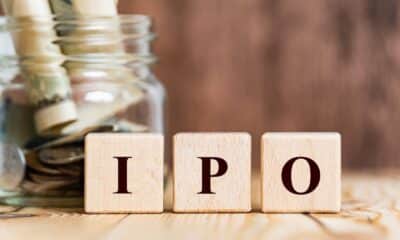
 Nyheter4 veckor sedan
Nyheter4 veckor sedanETFer som ger exponering mot börsintroduktioner
-

 Nyheter4 veckor sedan
Nyheter4 veckor sedanMånadsutdelande ETFer uppdaterad med två börshandlade fonder från AXA
-

 Nyheter4 veckor sedan
Nyheter4 veckor sedanBitcoin likes to dance to its own beat, not to tech stock tunes
-

 Nyheter4 veckor sedan
Nyheter4 veckor sedanTMX VettaFis Jane Edmondson om nya försvars-ETFer
-

 Nyheter2 veckor sedan
Nyheter2 veckor sedanHANetfs VD kommenterar Trump-Putin-toppmötet
-

 Nyheter4 veckor sedan
Nyheter4 veckor sedanBJLX ETF hållbara företagsobligationer med förfall 2032
-

 Nyheter4 veckor sedan
Nyheter4 veckor sedanIncomeShares strategiuppdatering: Kontantsäkrad säljoptioner plus aktie
-

 Nyheter4 veckor sedan
Nyheter4 veckor sedanBJLW ETF köper eurodenominerade företagsobligationer med förfall 2029


